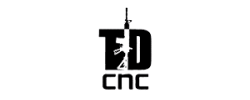We got our training forum and there's nothing in it so I'm pasting a review from a class I took last year. I am not affiliated with TR although I hold the company in high regard. They will be coming to Bastrop next month to teach a rifle class.
I recently had the opportunity to take this class as Tactical Response made a trip to Bastrop, Texas to teach their Fighting Pistol and Advanced Fighting Pistol classes. Due to my schedule (ie lack of vacation) I was not able to stay for the Advanced class but after taking FP, I will definitely be getting back to take Advanced Fighting Pistol as well. Both are two-day classes.
The course started with a short discussion of safety rules, distribution of the course handout, and discussion of the course objective. From the handout: "Develop basic gunhandling and marksmanship skills with the fighting pistol and increase our understanding of its capabilities at contact distance (0-1 yard), close quarters (1-3 yards), and intermediate range (4-15 yards) encounters. Learn basic tactics related to its effective use designed to afford its operator an advantage whenever and wherever possible. Develop the fighting mindset that cannot only enhance our ability to perform, but diminish our adversary's will to fight.
Once we got on the range, students all cleared their handguns and were instructed on how to draw from the holster. This was taught as a three step process: 1, lift cover garment (if necessary) with both hands and get your fighting grip on the gun with strong hand while weak hand stays on chest 2, get both hands on gun in the retention position 3, extend while simultaneously acquiring the front sight and getting it on target. This required a few repetitions for everyone to get right. Then, we started shooting dot drills with a holster/reholster for every drill.
The TR instructors brought a large jug of snap caps and everyone was expected to use them. Malfunction clearances are a big part of this class and everyone was expected to have a snap cap in every fresh magazine. This is a dynamic class, ie you will MOVE every time you draw your gun and you will MOVE some more anytime you have to reload or otherwise fix your gun. Imagine someone is coming at you with a knife when your gun goes down. Will you stop and stand there looking at your gun while you fix it? The natural tendency is to do just that. But to save your life you have to MOVE out of the way of your attacker, and keep your eyes on him as you get your gun running again.
TR also teaches the FAST method (fight, assess, scan, tac load) and you will do a 361 degree threat scan and a tac reload after every drill. To do the scan, both positions "sul" and "norte" are taught, and students are encouraged to mix the two positions up as neither will always apply to your circumstances.
Non-diagnostic techniques for clearing type 1 (fail to fire), type 2 (fte or stovepipe) and type 3 (double feed) were taught and practiced over and over.
The class builds on itself, so as we were taught to shoot from multiple positions (standing, kneeling on one or both knees, supine, and prone), we were still simultaneously clearing malfunctions constantly. Cover was set up and following a short discussion on cover vs. concealment, we were taught how to effectively use cover while using all the techniques from earlier in the class.
Day 2 began with a 4-hour lecture on mindset. The lecture, and accompanying section in the course handout, are worth the price of admission alone. It included outstanding discussions of mindset, controlling fear, situational awareness, layers of response, and MUCH more.
Live-fire exercises on day 2 got interesting! There were many drills forcing us to shoot on the move, and fight to cover. Then, one-handed shooting came into the mixture, followed shortly by one-handed moving drills, and one-handed malfunction clearances. Ever tried to reload or tap-rack with only your strong hand, or clear a stovepipe with one hand? It's interesting, but I now know the best way to do it. (Weak handed, one hand malfunction techniques were covered in the AFP class).
The class ended with a "special" drill that was a very important test. If I discuss the "special" drill in any detail I will be hunted down. Suffice it to say that it was a good drill.
These are just the highlights. Much more is covered in the course than what I discussed here. The class is 9-5 both days.
When the class was over, James Yeager yanked an M82 out of the back of his truck and we all had a go at it. We all stuck around and bull****ted for a while and then I had to head home.
This class costs $400 and is worth every penny. Total rounds fired were around 900. The instructors, James Yeager and Jay Gibson, were top notch and have stout credentials. We managed to talk them into coming back next spring to teach their Fighting Rifle class. I can't wait (literally... I may go up to Camden TN where TR is based and take the class there)!
Details on the course can be found here
Other reviews and pics from this particular class can be found here. You will have to register. PLEASE READ THE RULES FOR THAT FORUM. It is the real deal and the vast majority of people on there carry guns for a living.
I recently had the opportunity to take this class as Tactical Response made a trip to Bastrop, Texas to teach their Fighting Pistol and Advanced Fighting Pistol classes. Due to my schedule (ie lack of vacation) I was not able to stay for the Advanced class but after taking FP, I will definitely be getting back to take Advanced Fighting Pistol as well. Both are two-day classes.
The course started with a short discussion of safety rules, distribution of the course handout, and discussion of the course objective. From the handout: "Develop basic gunhandling and marksmanship skills with the fighting pistol and increase our understanding of its capabilities at contact distance (0-1 yard), close quarters (1-3 yards), and intermediate range (4-15 yards) encounters. Learn basic tactics related to its effective use designed to afford its operator an advantage whenever and wherever possible. Develop the fighting mindset that cannot only enhance our ability to perform, but diminish our adversary's will to fight.
Once we got on the range, students all cleared their handguns and were instructed on how to draw from the holster. This was taught as a three step process: 1, lift cover garment (if necessary) with both hands and get your fighting grip on the gun with strong hand while weak hand stays on chest 2, get both hands on gun in the retention position 3, extend while simultaneously acquiring the front sight and getting it on target. This required a few repetitions for everyone to get right. Then, we started shooting dot drills with a holster/reholster for every drill.
The TR instructors brought a large jug of snap caps and everyone was expected to use them. Malfunction clearances are a big part of this class and everyone was expected to have a snap cap in every fresh magazine. This is a dynamic class, ie you will MOVE every time you draw your gun and you will MOVE some more anytime you have to reload or otherwise fix your gun. Imagine someone is coming at you with a knife when your gun goes down. Will you stop and stand there looking at your gun while you fix it? The natural tendency is to do just that. But to save your life you have to MOVE out of the way of your attacker, and keep your eyes on him as you get your gun running again.
TR also teaches the FAST method (fight, assess, scan, tac load) and you will do a 361 degree threat scan and a tac reload after every drill. To do the scan, both positions "sul" and "norte" are taught, and students are encouraged to mix the two positions up as neither will always apply to your circumstances.
Non-diagnostic techniques for clearing type 1 (fail to fire), type 2 (fte or stovepipe) and type 3 (double feed) were taught and practiced over and over.
The class builds on itself, so as we were taught to shoot from multiple positions (standing, kneeling on one or both knees, supine, and prone), we were still simultaneously clearing malfunctions constantly. Cover was set up and following a short discussion on cover vs. concealment, we were taught how to effectively use cover while using all the techniques from earlier in the class.
Day 2 began with a 4-hour lecture on mindset. The lecture, and accompanying section in the course handout, are worth the price of admission alone. It included outstanding discussions of mindset, controlling fear, situational awareness, layers of response, and MUCH more.
Live-fire exercises on day 2 got interesting! There were many drills forcing us to shoot on the move, and fight to cover. Then, one-handed shooting came into the mixture, followed shortly by one-handed moving drills, and one-handed malfunction clearances. Ever tried to reload or tap-rack with only your strong hand, or clear a stovepipe with one hand? It's interesting, but I now know the best way to do it. (Weak handed, one hand malfunction techniques were covered in the AFP class).
The class ended with a "special" drill that was a very important test. If I discuss the "special" drill in any detail I will be hunted down. Suffice it to say that it was a good drill.
These are just the highlights. Much more is covered in the course than what I discussed here. The class is 9-5 both days.
When the class was over, James Yeager yanked an M82 out of the back of his truck and we all had a go at it. We all stuck around and bull****ted for a while and then I had to head home.
This class costs $400 and is worth every penny. Total rounds fired were around 900. The instructors, James Yeager and Jay Gibson, were top notch and have stout credentials. We managed to talk them into coming back next spring to teach their Fighting Rifle class. I can't wait (literally... I may go up to Camden TN where TR is based and take the class there)!
Details on the course can be found here
Other reviews and pics from this particular class can be found here. You will have to register. PLEASE READ THE RULES FOR THAT FORUM. It is the real deal and the vast majority of people on there carry guns for a living.






